Fungus in the bathroom - remedy immediately
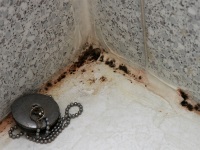
Due to the humid environment, poor ventilation and poor lighting, the bathroom becomes a vulnerable place for the spread of fungus. This is a problem faced in many apartments. If possible, you should try as soon as possible to remove the uninvited guest, because it not only spoils the bathroom interior, but also has a negative impact on human health.
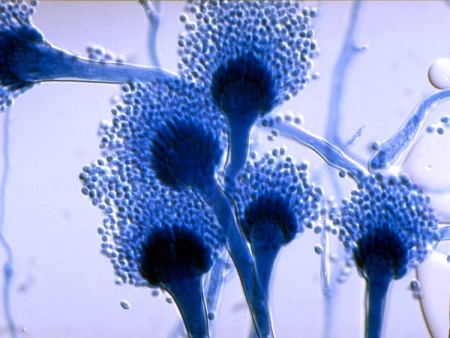
Causes
There can be many reasons for the appearance of fungus. The main ones can be called the following:
- high humidity, including due to uneven heating, frequent washing, poor ventilation;
- faulty plumbing;
- cold walls;
- favorable temperature (not lower than 15-20 degrees Celsius).
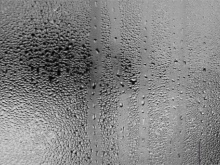

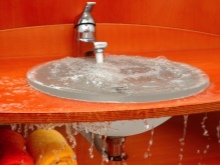
Since such factors for bathrooms is a fairly typical phenomenon, it is this room in the apartment becomes the most favorable environment for fungus development.
Most often the fungus appears and multiplies on the walls and ceiling.
Destroy fungus real, the most The most important thing is to get to the fungus, which is the source of black mold reproduction. Most often unpleasant spores form on materials with a porous surface, for example, on paint, concrete, plastic and other places. Notice the fungus is not difficult, because it manifests itself in the form of dark dots or spots on walls, ceilings and inside the joints between tiles.
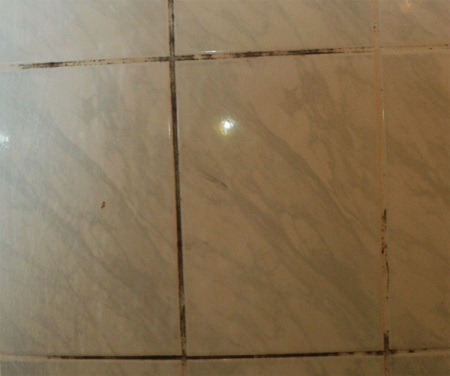
Harm and even danger
Black mold entails a lot of negative consequences. These include:
- Unpleasant odor in the bathroom;
- Unpresentable appearance of the room;
- damage to furniture;
- deterioration of the materials that you used when repairing the bathroom (cracks may appear in the concrete, possible delamination of plaster or paint);
- deterioration of human health.
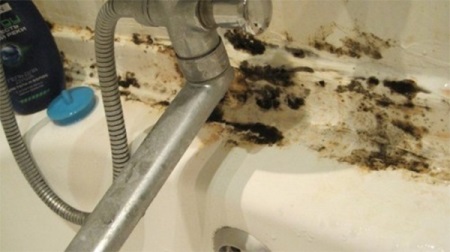
The last point is probably the most critical, because the products of black fungus, which a person inhales, are highly toxic.
Therefore, if you do not take measures to eliminate mold, you can get a whole bunch of diseases, some of which can go into chronic forms.
These include asthma, skin rashes, cough, runny nose, and nausea. Permanent headaches and even rheumatism are possible. Do not turn a blind eye to such an unwanted "neighbor", settled in your bathroom.
In the shower or bathtub
If mold appears in the shower or directly in the bathtub itself, the same consequences are possible.
If mold appears in the bathtub, you should take into consideration that you will also have to come into contact with it, which is fraught with not only skin diseases, but also a negative impact on the entire body.
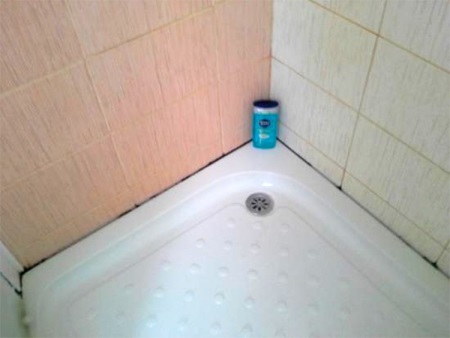
Methods of combating
At the first appearance of fungus should immediately sound the alarm. First of all, the very fact that the black spots "settled" in your bathroom, already shows problems with ventilation.
Before you start treating the affected walls or ceiling, assess how the ventilation can be repaired to prevent the reoccurrence of fungus.
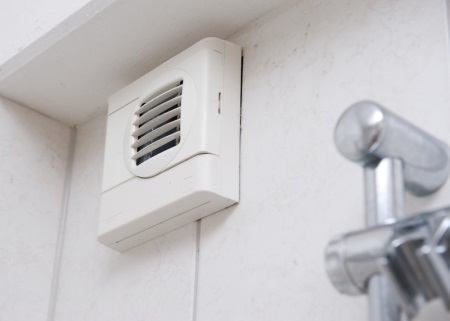
In the early stages of mold, it is much easier to eradicate it than after a long time, when it has had time to affect a large area.
Methods of "treatment" of affected areas can be divided into two categories, depending on the means used.
Folk methods
Who said that without antifungal sprays or solutions with mold can not cope? And if you in addition suffer from allergies or upper respiratory tract diseases, it is generally contraindicated to use chemical means.
To help fight the fungus can help in the following ways:
- Soda, extinguished with vinegar. Fill the affected area with enough baking soda (the more the better), then extinguish it with vinegar. A foam will appear, after settling, which should be thoroughly cleaned with a soapy solution or other detergent and warm water.
- A mixture of water and tea tree oil. Take a couple of teaspoons of tea tree oil per two cups of heated water. This solution is sprayed on the affected surfaces from a sprayer. You do not need to rinse it off the tiles. This method is best used at night, when no one is in the bathroom.
- Recall the lessons of chemistry. Mix together one part boric acid, two parts hydrogen peroxide and two parts vinegar with four parts water. The resulting mixture is excellent for removing fungus, just wipe the affected area with the solution.
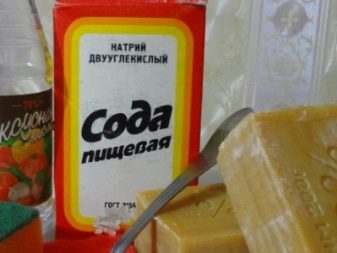
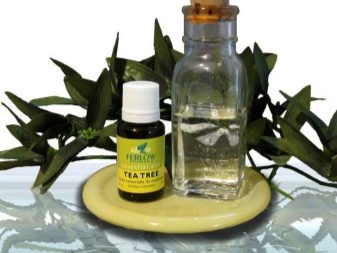
Chemical
If you are not allergic, then effectively cope with mold will help antifungal agents, which we will talk about below.
Copper sulfate
This remedy allows you to remove fungus with a high degree of effectiveness. At the same time, it is not at all difficult to use, but it is impossible to inhale its fumes due to toxicity, so before you start working with it, use gloves and a respirator. A solution of copper sulfate is prepared according to the instructions and then applied with a brush to the affected area. Do not skimp on the thickness of the layer in places of greatest accumulation of fungus. After a few hours, the solution is thoroughly washed off and the surface is dried. Be sure to ventilate the bathroom after completing the work.
Bleach
Not everyone knows that a solution of bleach and water helps to effectively remove fungus in the bathroom. But since the smell of the solution is quite strong, you should treat surfaces with gloves and a respirator.
When preparing the solution, the proportions should be taken into account: one part of water for 10 parts of bleach. The liquid can be applied to affected surfaces with a brush, cloth or sprayer. After application, it is not necessary to rinse the solution, but be sure to ventilate the room.
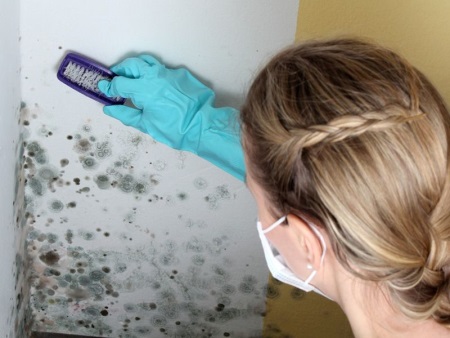
Industrial Chemicals
Also called antifungal agents, they are divided into:
- Industrial agents, which are used in construction to eliminate biocorrosion;
- home remedies.
Usually all remedies are sold in quantities sufficient to make a liter of concentrated solution.
To fight fungus, it is enough to dissolve a capful of dry contents in a liter of water.
Among the proven remedies, professionals recommend:
- Antifungal or Gidrotex from the Russian manufacturer,
- HG from Holland for the treatment of inter-tile joints,
- German Renogal.
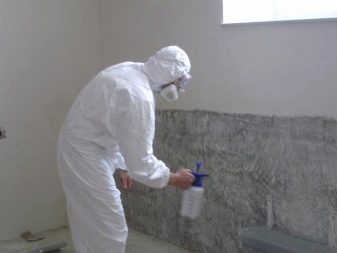
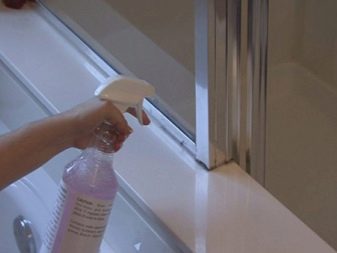
And remember that when using any chemicals, you need to protect your hands with gloves to avoid getting spores of fungus or solutions on them.
Preparing the room
In preparing the room for treatment, the following rules should be followed:
- Before removing the fungus, it is necessary to pre-treat the surfaces, which includes the removal of the very top layer. After that, the surface must be thoroughly dried.
- Knock the walls. You may find voids that need to be opened up and cleaned.
- Do not turn on the water in the bathroom during work. Treat only in a dry room.
- If you cannot find the fungus, the source of the mold, destroy all traces of the fungus on the surfaces.
- Grout in the joints between tiles should be scraped off in the affected areas.
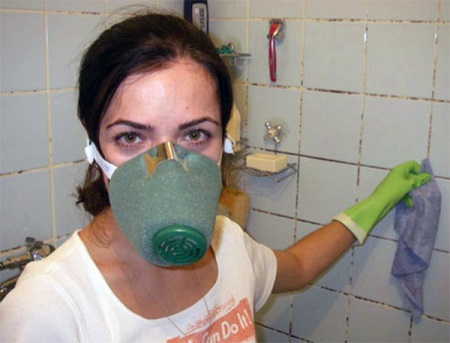
Preventive measures
Destroying fungus is not an easy thing to do. To avoid all the hardships associated with the appearance of this unpleasant cohabitant, it is necessary to carry out preventive measures that can protect the bathroom from fungus infestation:
- Maintain optimal humidity in the room. Do not skimp on a quality towel rail, which will dry the air in the bathroom;
- Ventilate the room. You can install an exhaust fan for good air circulation. After taking a hot bath or shower, briefly open the bathroom door to let excess moisture evaporate;
- If you are renovating, treat the walls with a specialized antifungal solution before laying tiles;
- Monitor the condition of the plumbing. Any leak can lead to an accumulation of liquid on the tile surface, and this leads to the formation of fungus;
- Change the pipes if there is constant evaporation on them;
- Thoroughly treat with sealant the places of the most frequent ingress of moisture. As a rule, joints are treated;
- Do not dry laundry and clothing in the bathroom, if only in minimal quantities;
- Do not allow water to stagnate in cups or other containers;
- caulk any cracks in the walls.
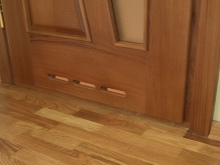
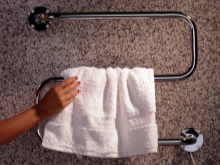
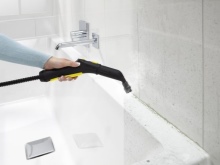





I have nullified the fungus with bleach. But I guess. not all types of fungus will fit this method.
Thank you all methods are simple and easy to understand.only remains to apply in practice